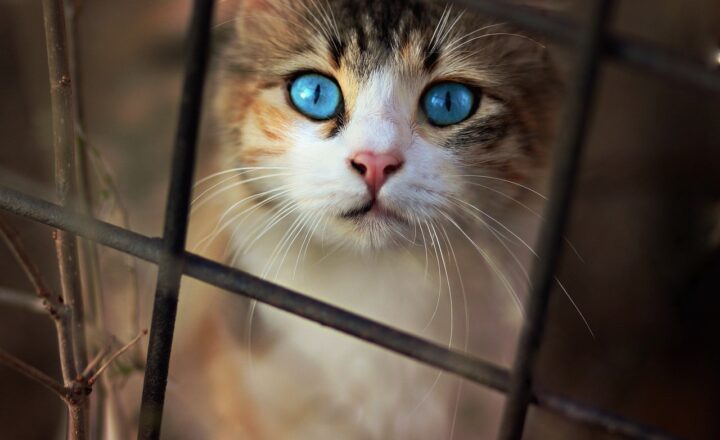Why the Aurora Borealis Has Been Both Feared and Celebrated
November 17, 2024

The Aurora Borealis, also known as the Northern Lights, has captivated humanity for millennia with its mesmerizing display of colors dancing across the night sky. Yet, throughout history, this phenomenon has sparked a complex mix of awe and fear among different cultures. In this article, we will explore the historical significance of the Aurora Borealis, the myths and beliefs surrounding it, and its modern-day implications for science, tourism, and environmental awareness.
1. The Science Behind the Aurora Borealis
The Aurora Borealis is a natural light display predominantly seen in high-latitude regions around the Arctic. It is caused by the interaction between charged particles from the Sun and the Earth’s magnetic field. When solar wind reaches Earth, it disturbs the magnetosphere, resulting in the emission of light as these particles collide with gases in the atmosphere. This process creates the beautiful curtains of green, pink, red, and sometimes purple lights that we associate with the Northern Lights.
While the scientific explanation provides clarity, it has also led to various interpretations across different cultures.
2. Historical Perspectives: Wonder and Fear
Throughout history, communities living in proximity to the Aurora Borealis have had mixed reactions to its appearances. In Nordic folklore, the Northern Lights were considered the spirits of the departed, guiding the way for the loved ones left behind. Conversely, Indigenous peoples of North America viewed them with great reverence, often associating them with omens, messages from the gods, or even as the souls of animals.
For example, the Inuit believed that the lights were a manifestation of their ancestors dancing in the sky. In contrast, the Sami of Northern Europe thought of them as a representation of spirits and often warned others to avoid disturbing the spectacle. This complex tapestry of beliefs illustrates how the awe-inspiring beauty of the lights was often shadowed by the fear of their unknown origins and meanings.
In addition, tales of the Aurora Borealis were sometimes attached to local superstition, where a sudden appearance could be seen as an ill omen, foreshadowing war or disaster. Thus, the Northern Lights became a symbol of both celestial beauty and foreboding.
3. The Aurora in Art and Literature
The Aurora Borealis has inspired countless works of art and literature, serving as a potent symbol of nature’s wonder. Paintings from the Romantic era often depicted the Northern Lights in dramatic landscapes, showcasing not only their beauty but also humanity’s emotional response to nature. Artists like Caspar David Friedrich and Edvard Munch captured their essence, reflecting the dual themes of beauty and ephemeral existence.
Moreover, in literature, the Aurora has been a metaphor for deeper philosophical themes, such as the struggle between light and darkness or the transient nature of life. It is not uncommon to find references to the Northern Lights in poetry, where they symbolize hope and inspiration amid adversity.
4. The Modern Day: Tourism and Environmental Awareness
Today, the Aurora Borealis stands as one of nature’s most sought-after spectacles, drawing tourists from around the globe who travel to witness its ethereal beauty. Destinations such as Tromsø in Norway, Yellowknife in Canada, and Reykjavik in Iceland serve as meccas for aurora enthusiasts. However, this influx of tourism brings with it a responsibility to protect and conserve the delicate ecosystems where these natural wonders occur.
Alongside the pursuit of tourism, a greater appreciation for the science behind the Aurora Borealis has emerged. Modern technology has allowed for more accurate predictions of auroral activity, which has increased public interest and understanding of this phenomenon. Scientists study the Northern Lights not only for their beauty but to gain insight into solar activity and its effects on Earth’s climate.
Consequently, the Aurora Borealis has transitioned from an object of fear to one of celebration—a gateway for deeper understanding of our planet’s interactions with the universe.
5. The Cultural Impact: Festivals and Celebrations
Many cultures now celebrate the Aurora Borealis through festivals that symbolize unity with nature. In Norway, for example, there are festivals dedicated to the Northern Lights, where people gather to share stories, music, and indigenous culinary traditions. This not only fosters a sense of community but also educates attendees about the histories and myths surrounding the phenomenon.
These celebrations serve as a reminder of the duality of the Aurora Borealis—a blend of fear and admiration that reflects the complex relationship between humanity and the natural world. They embody our journey from misunderstanding something magnificent to embracing and celebrating it as a symbol of hope and wonder.
Conclusion
The Aurora Borealis remains a beacon of fascination that transcends cultures and generations. From ancient myths to modern scientific understanding, the Northern Lights have showcased humanity’s quest to comprehend nature’s complexities. While it has been both feared and celebrated, the Aurora inspires us to delve deeper into our relationship with the environment and fosters an appreciation for the wonders of the world.
As we continue to explore and protect our planet, the Northern Lights will undoubtedly remain a source of inspiration and reflection—reminding us of the delicate balance between fear and celebration in our understanding of nature.








